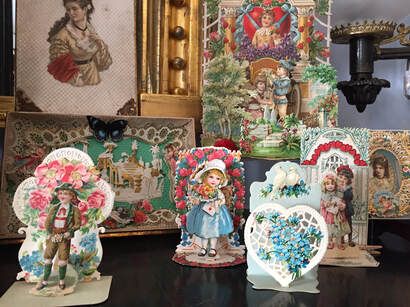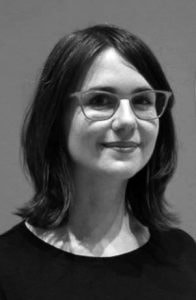What can visitors look forward to seeing in this special Valentines exhibition this month? We will start with some valentines from the 1820s and will have some into the 1920s, 40s, 50s and 60s. The exhibition will encompass the main floor, including the Rising Room and Double Parlors. I think the public will be interested in the history and beauty of the very old ones—and the ones they put in Valentine’s Day boxes in the 1950s may help some to bring back their memories.
How will you tie 200 Years of Valentines to the new Barbara Shermund exhibition? We intend to tie in the exhibition in the Main Galleries (Tell Me a Story Where the Bad Girl Wins: The Life & Art of Barbara Shermund) in two ways. First, we will also share information about early valentine entrepreneur Esther Howland. She was a trailblazer in the valentine business in New England from the mid-1850s to the 1880s. This was very unusual for a lady entrepreneur. She is considered “the Mother of the American Valentine.” Pretty much up until that time, all valentines were made in Europe. From the 1850-70s, Esther made over $100k making valentines, which, in that time period, was a fortune. We will also tie in the satirical nature of Shermund’s comics when we feature some of the satirical valentines that started in the 1820s and sold in the 1950s. Many are very cartoon-like with a satirical edge. They were called “vinegar valentines” because they had that sour tone to them. You did not send them to someone you would want to impress. They were often sent anonymously.
What makes the older valentines so unique and interesting? Many of the 1850s-80s valentines did things inside. They opened up, there were hidden messages, puzzles and more. I personally think that the excitement of the valentines of this era is that they did things. They made valentines that open and open and open and open with hidden messages—up to 13 within it. Victorian cards had a lot of symbolism based on the flowers that were used. If there was a gold ring somewhere in the card, it was essentially a marriage proposal. I have a theory that it was for hiding the messages from the parents. The real “I love you” message was buried much deeper. It was fun for the young lady to search through and find all those messages. You can also imagine the young lady and her beau sitting down together and he’s showing her all the messages. Most of the early ones had professional art work on the front, usually in watercolor, and the rest was left blank for the sender to put their own message. A lot of the early ones have long poems. One we have is a proposal for an elopement from the 1820s. The other one I find interesting has 13 stanzas of a very dark and long poem. It basically says if you reject me and don’t love me, I’ll kill myself. It’s always interesting to me as a collector, how these have survived. It may have been stuck in the bottom of a box for decades, so it really preserved them.
Do you have a favorite era of valentines? The ones I really like are from the 1920s. They started being made around WWI and they are manufactured. They are paper engineered and designed to lay flat and go in an envelope, but they will fold open and have wonderfully clever designs. Some have honeycomb tissue paper and chromolithograph designs—really cleverly done paper engineering. This would be about the same time that Barbara Shermund started to do some of her cartoons for The New Yorker.
What is that you enjoy so much about collecting and exhibiting valentines? We have all gotten valentines over the years—the ones we got in elementary school from classmates, and the ones we received in high school from boyfriends and girlfriends. It’s a tradition that everybody is familiar with, but many people may not be familiar with the history.




 RSS Feed
RSS Feed